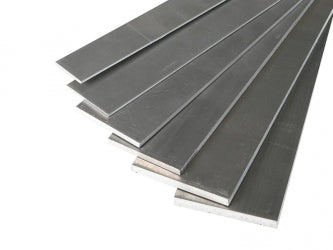- 2M Covering - Black / White Checker
- Width 638mm - Length 2 metre
-
We would recommend that you start by covering the small, difficult areas first. For a smooth long lasting finish, slightly different methods of applying MacGregor covering are used to suit the types of surface to be covered.
Preparation of Covering - the more time spent on preparation the better the final appearance will be of your model. It is most important that you try to achieve a smooth even surface all over your model. Fill all cracks and holes with filler and sand smooth. Any uneven surface will show through the covering. Any surfaces other than wood (epoxy, fibreglass, plastic) should be sanded smooth.
Finally remove any sanding residue and wipe with a tissue damped with thinners or alcohol.
Iron Temperature must be set correctly to achieve a successful finish with MacGregor covering. Too low and the covering will not stick. If the temperature is set too high then the covering will wrinkle up and bubble later on. To test that your iron is set to the correct temperature, cut some small pieces of covering approximately 2" square. Peel off the backing film and place a square on the sole plate of the iron (Adhesive side up) to see how the heat affects the covering. If the heat just makes the square dimple slowly then the iron is at LOW. You can test this by ironing a strip of covering onto a smooth piece of balsa. It should stick and once cooled will pull a few fibres off the balsa when it is peeled off. Mark the iron thermostat setting as LOW. Now increase the iron temperature slightly and place a fresh square of covering on the sole plate. This should wrinkle up quickly. Mark the thermostat setting as HIGH.

Iron temperatures (Left to Right):
LOW - film dimples very slowly
MEDIUM - film puckers slowly
HIGH - film wrinkles quickly
LOW = 100°c, High = 120°c
Wings - Cover each panel separately, with one piece of MacGregor Covering for the bottom panel first, and then another for the top panel.

Fuselages - Four pieces of covering will be needed. Top and bottom first, then finish by applying the sides afterwards (please see diagram below).
Corners - For example where the tailplane joins the fuselage. The corner is covered using a narrow strip of MacGregor covering 1" wide. Then apply the larger pieces of covering for the tailplane overlapping onto the strips (please see diagram below).

Solid Surfaces - Sheet balsa, ply. Cut the MacGregor covering 1" oversize and place it on the required surface you wish to cover. Set the heat to LOW. Begin from the centre and iron outwards. Use light pressure to smooth the covering down, at the same time gripping the covering at the edge and pulling it outwards to stretch out any wrinkles and make it lie flat. Then iron that part down. It is important that you continue working outwards from the centre, until the entire surface is covered.
Then increase the heat to HIGH and reheat each part of the MacGregor covering in turn, rubbing it with a soft cloth while it is cooling, so that the covering is firmly stuck to the surface at all points, achieving a smooth finish.
Framework - Wings and fuselages (framework of strips and cross members) Cut the MacGregor covering 1" oversized all round. Peel off the backing film and lay the covering with the adhesive side down on the framework. Set the iron to LOW and tack at various spots around the edges, with light pressure use the toe of the iron (please see diagram below).



Now pull the MacGregor covering gently to get a snug fit. If the covering produces large wrinkles then untack with the iron, pull gently to remove wrinkles and retack.
Now you need to seal the edges all round the framework or wing, resting the sole of the iron flat on the edge of the framework and using a gentle rocking movement around the edge of the frame. Now increase the iron heat to HIGH and shrink the MacGregor covering by gliding the iron very lightly over the surface from the edges towards the centre. Try not to rush this process, and slowly let the heat tighten the covering. Trim the surplus covering from round the edges using a sharp blade. Finally, iron down the trimmed edges firmly.






